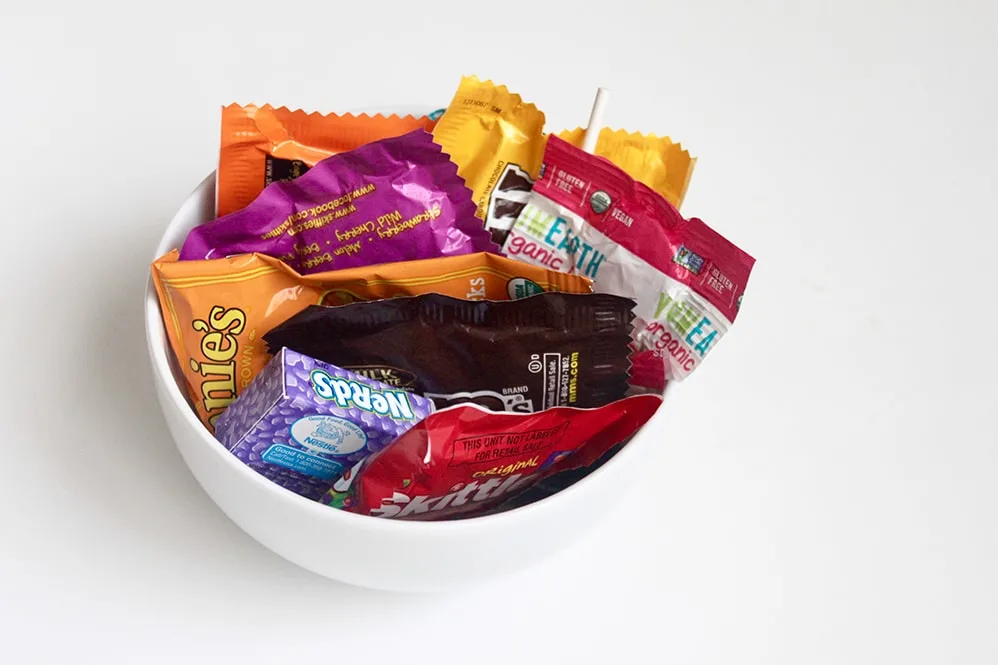Halloween is a favorite holiday in our house. We love coming up with fun and creative costumes, carving pumpkins, and, of course, trick-or-treating. Though I limit the amount of added sugar we eat, candy gets a “free pass” in our house on Halloween.
After Halloween, the massive bowl of candy can be a huge source of temptation. It is often very hard to stop eating after just one snack-size piece.
Thankfully, there are some research-based suggestions on how to avoid unintentional overeating from the candy bowl.
Research-based insights to help you eat less candy or treats
The Cornell Food and Brand Lab (CFBL) has conducted many studies evaluating how we consume food, and many of these studies aim to better understand how we mindlessly eat food.(1)
These findings can be used to help reduce the amount of candy or other holiday treats we consume. S
pecifically, here are three research-based suggestions to reduce the amount of holiday treats you unintentionally consume.
1. Out of sight, out of mind
This suggestion is not surprising and seems like common sense, and the CFBL has research data to back it up.
They gave secretaries either clear or white lidded candy dishes filled with chocolates to keep on their desk as a gift for Secretary’s Week and evaluated how many candies were eaten each day.
The secretaries given clear dishes reached for a sweet treat 71% more often than those given the white dishes!
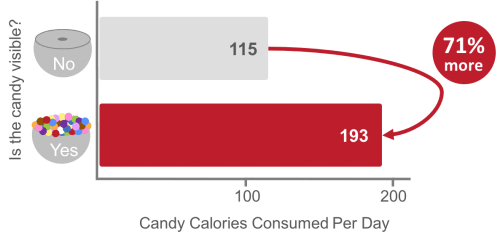
Why do we eat fewer treats if we can’t see them?
Because every time we see the treat we have to decide if we want the treat or not.
Key point: Store treats out of sight to reduce the number of times you have to decide against eating the treat.
2. Store treats in an inconvenient location
In a study similar to the candy dish study described above, the CFBL also investigated how the location of the candy dish can impact treat consumption.
In this study, all participants were given candy in a clear candy dish.
However, the location of the candy dish changed each week: on the corner of the desk, in the top-left desk drawer, or on a file cabinet six feet away from the desk.
The researchers found that more candies were eaten if it took less effort to reach them.
In fact, more than twice as many candies were eaten if they were stored on the desk versus on a file cabinet 6 feet away.
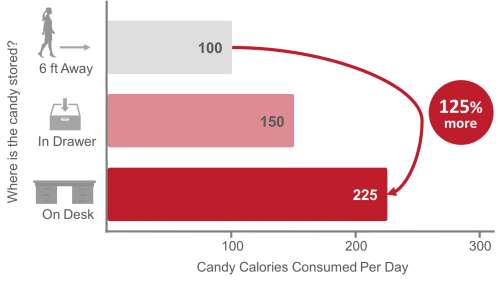
Why does storing treats in an inconvenient location work?
Two factors are likely at work: convenience and having time to talk oneself out of eating the extra treat.
Key point: If you have to make a special trip to get the treat, you will eat fewer.
3. Sort candy to reduce variety
Two separate CFBL studies evaluated how candy variety influenced consumption.
In one study, participants were offered jelly beans either sorted by flavor or combined in bowl.
Those participants who selected jelly beans from a disorganized bowl took almost twice as many as those selecting from an organized tray.
Simply sorting candy significantly reduced the amount people ate by almost half!
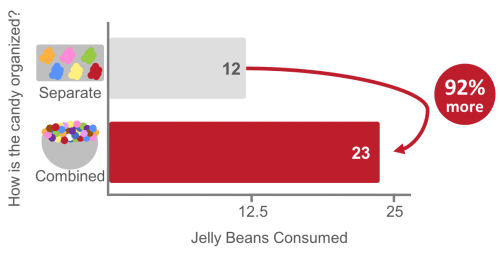
In another study, participants were offered one of two large bowls of M&M’s to snack on while watching a video.
One bowl had 7 colors of M&M’s, the other had 10 different colors.
The participants with the 10 color bowl ate 43% more M&M’s than those who only had 7 different colors of M&M’s.
The researchers found that by simply increasing the variety of candy (either flavor or color), the amount people ate increased dramatically.
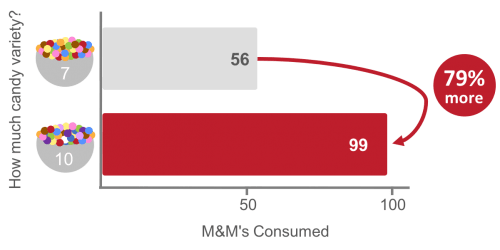
Why does sorting candy work?
Our liking of food increases when we perceive a larger variety, and this in turn increases how much we consider is normal to eat.
Key point: Reduce variety of treats by sorting through Halloween candy and only keeping favorites.
And if you are going to have a bowl of candy out in a visible location, consider only having one type of candy in the bowl.
The fewer varieties of treats available, the less you will unintentionally eat.
Final thoughts about eating less junk food
No matter how you decide to manage the post-Halloween candy consumption, there are some research-driven ways to reduce the amount of candy that you unintentionally eat.
In our house, the “switch witch” comes to visit while the boys are sleeping and trades their candy for a fun toy. Only a small handful of favorite candies are saved, out of sight, for future treats.
Pin recommendations for later:
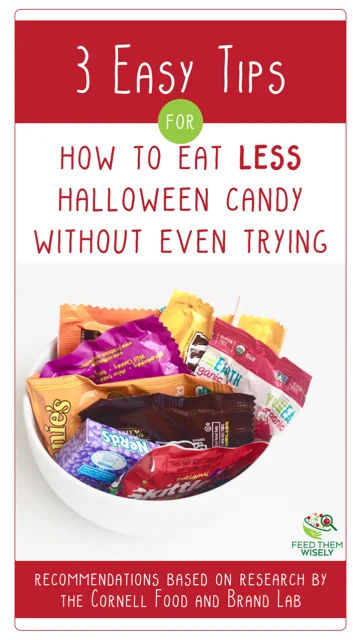
References
- Mindless Eating: Why we eat more than we think. Brian Wansink, Ph.D. 2006 (link)
